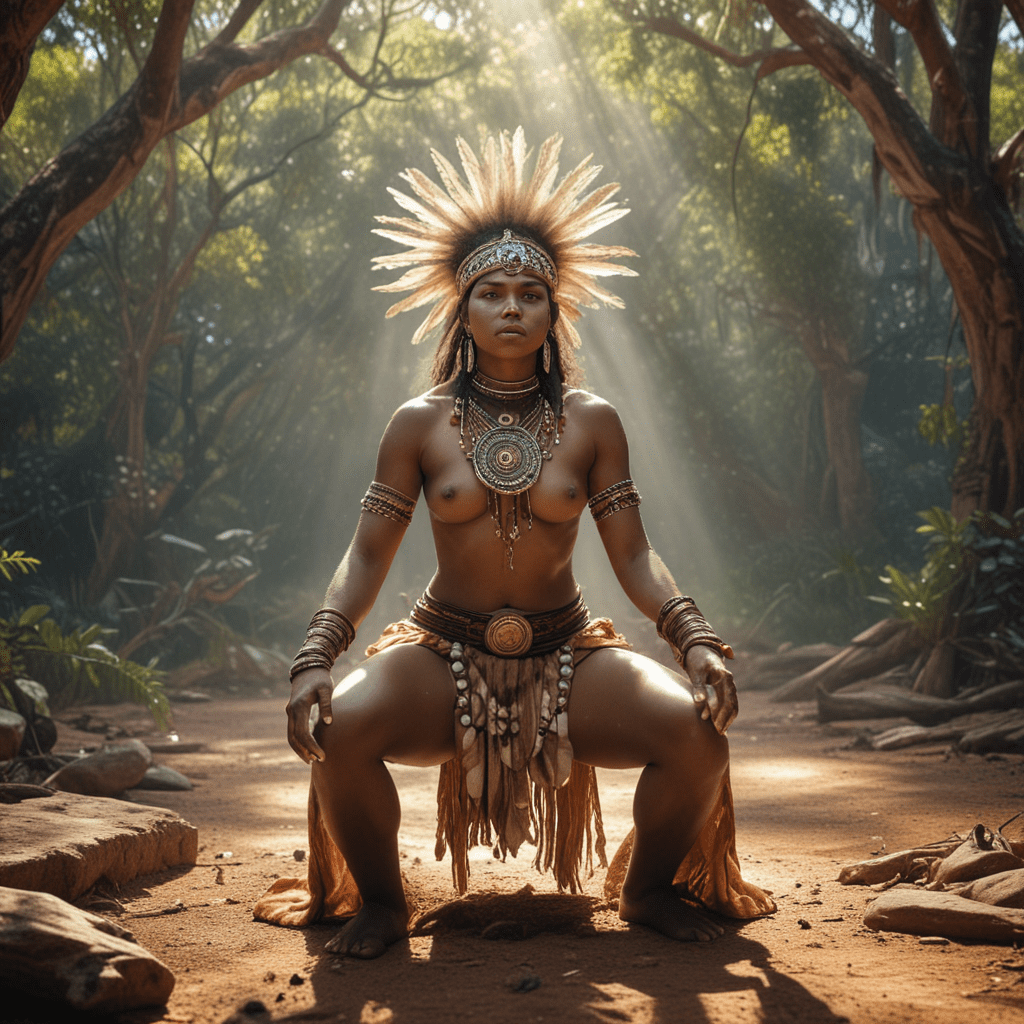Healing Practices in Australian Aboriginal Mythology
1. Introduction
For millennia, Australian Aboriginal peoples have developedsophisticated and holistic healing practices deeply connected to their unique mythologies and spiritual beliefs. These practices reflect a profound understanding of the interconnectedness between physical, mental, emotional, and spiritual well-being, offering valuable insights for contemporary medicine and healthcare systems.
2. Overview of Aboriginal Healing Beliefs
Australian Aboriginal healing practices are based on the belief in the Dreaming, a sacred time and place where ancestral beings created the world and established the laws of life. Healing is seen as restoring balance and harmony within the individual and the wider ecosystem, often involving rituals, plant-based medicines, and spirit communication.
3. Dreamtime Creation Stories and Healing
Dreamtime creation stories play a central role in Aboriginal healing. These stories recount the journeys of ancestral beings who created landscapes, animals, and humans, establishing cultural norms and healing practices. By re-enacting these stories through rituals and ceremonies, Aboriginal healers seek to restore harmony and empower individuals to heal.
4. The Role of Elders and Traditional Healers
Elders and traditional healers hold a revered position in Aboriginal communities. They possess extensive knowledge of the Dreaming, healing practices, and plant-based medicines. They guide individuals through healing journeys, offering spiritual support, counseling, and practical remedies, ensuring the cultural continuity of traditional knowledge.
5. Ceremonial Rituals for Healing
Elaborate ceremonial rituals form the cornerstone of Aboriginal healing practices. These rituals involve chanting, dancing, painting, and smoking ceremonies, each with a specific purpose and connection to the Dreaming. Through these rituals, healers diagnose illnesses, promote spiritual healing, and facilitate communication with ancestral beings who guide the healing process.
6. Plant-Based Medicines and Remedies
Aboriginal healers possess a comprehensive knowledge of medicinal plants' healing properties. They utilize various methods, including infusions, decoctions, poultices, and ointments, to treat a wide range of ailments. These plants often have cultural and spiritual significance, reinforcing the interconnectedness between healing and the natural world.
7. Animal-Based Healing Practices
In Aboriginal cultures, animals hold a deep spiritual significance and are often seen as healers and guides. Animal-based healing practices include using animal parts for medicinal purposes, such as emu feathers for soothing wounds, and incorporating animal symbolism into healing rituals to connect with the spirit world.
8. Spirit Communication and Healing
Spirit communication plays a crucial role in Aboriginal healing. Healers often communicate with ancestral spirits, nature spirits, and totems to gain insights into an individual's illness and provide spiritual guidance. This communication enables healers to facilitate healing, resolve emotional issues, and restore balance within the patient.
9. Contemporary Indigenous Healing Methods
Aboriginal healing practices have evolved over time, incorporating modern medical advancements while preserving traditional knowledge. Contemporary Indigenous healers combine traditional rituals, plant-based medicines, and Western medical techniques to provide holistic and culturally appropriate healthcare. They work in collaboration with healthcare professionals to enhance the well-being of Aboriginal communities.
10. Significance and Impact of Traditional Aboriginal Healing
Traditional Aboriginal healing practices have a profound impact on Indigenous communities, fostering cultural continuity, promoting mental and physical well-being, and preserving ancient knowledge. They offer valuable insights into holistic and spiritual approaches to health and provide a framework for addressing the unique needs of Aboriginal peoples. By integrating traditional practices into modern healthcare systems, we can enhance the effectiveness of health interventions and promote culturally responsive care.
Frequently Asked Questions (FAQs)
Q: What are the main principles of Aboriginal healing?
A: Aboriginal healing focuses on restoring balance and harmony within individuals and the wider ecosystem, emphasizing the interconnectedness of physical, mental, emotional, and spiritual well-being.
Q: How do Aboriginal healers use Dreamtime creation stories in healing?
A: Dreamtime creation stories provide a framework for healing rituals, empowering healers to access ancestral knowledge and facilitate spiritual healing.
Q: What is the role of elders and traditional healers in Aboriginal healing?
A: Elders and traditional healers possess extensive knowledge of the Dreaming, healing practices, and plant-based medicines. They guide individuals through healing journeys, offering spiritual support and ensuring cultural continuity.
Q: Can contemporary Indigenous healing methods be combined with Western medicine?
A: Yes, contemporary Indigenous healers integrate traditional practices with modern medical techniques to provide holistic and culturally appropriate healthcare, collaborating with healthcare professionals to enhance health interventions.


